
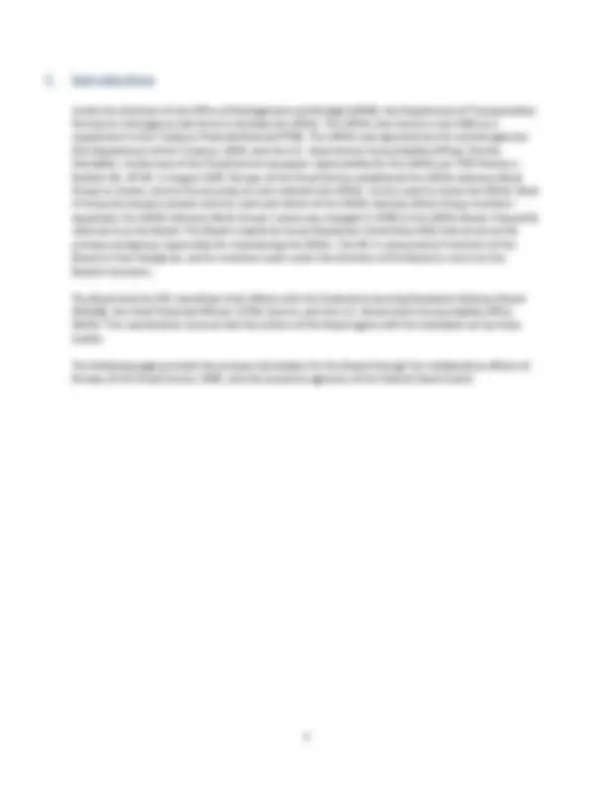
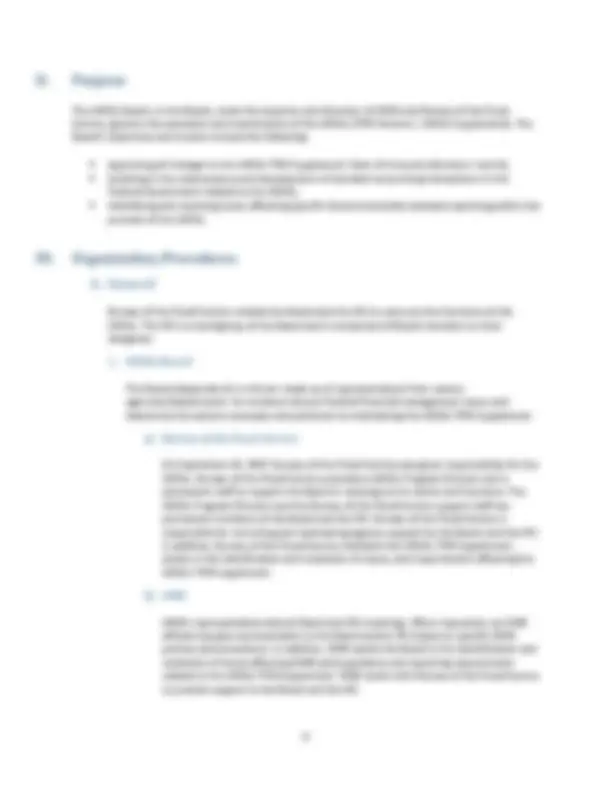
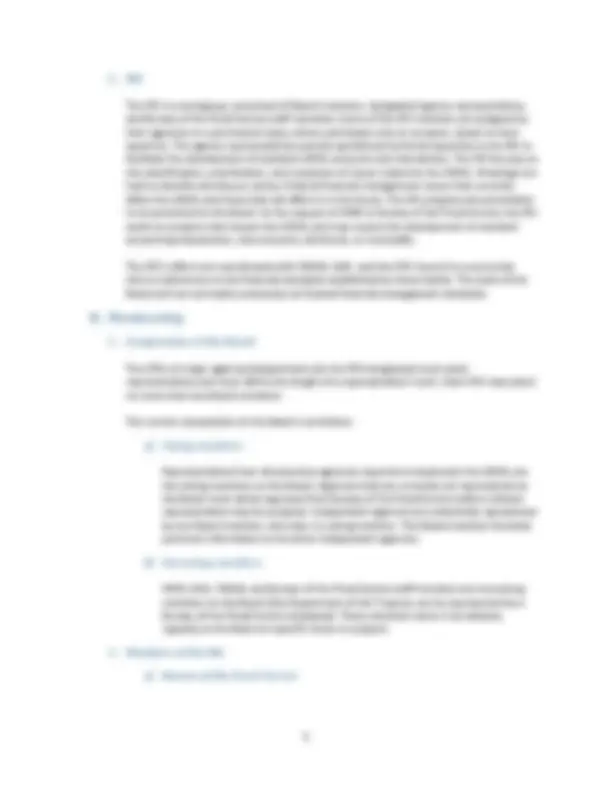
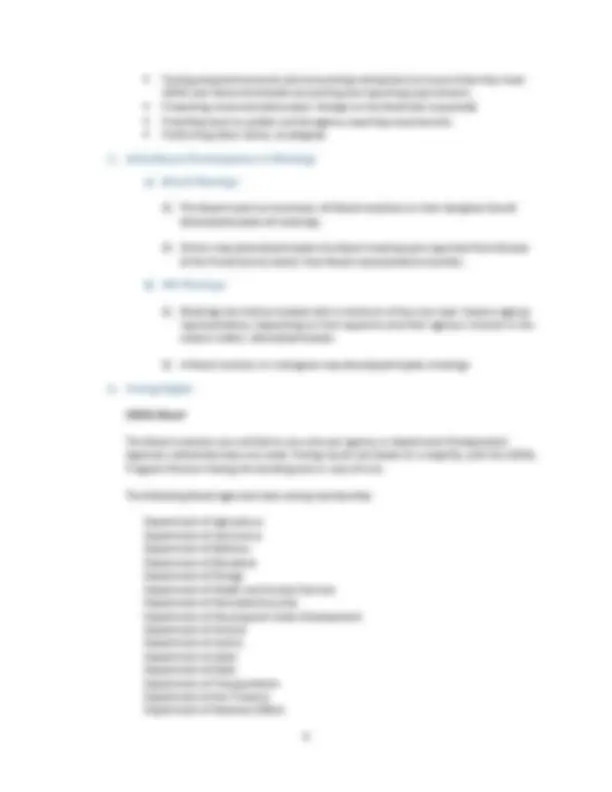
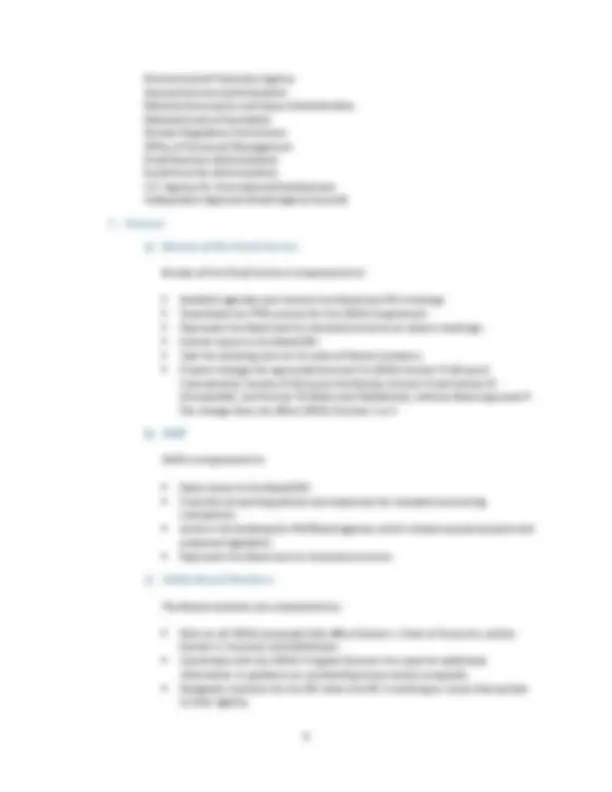
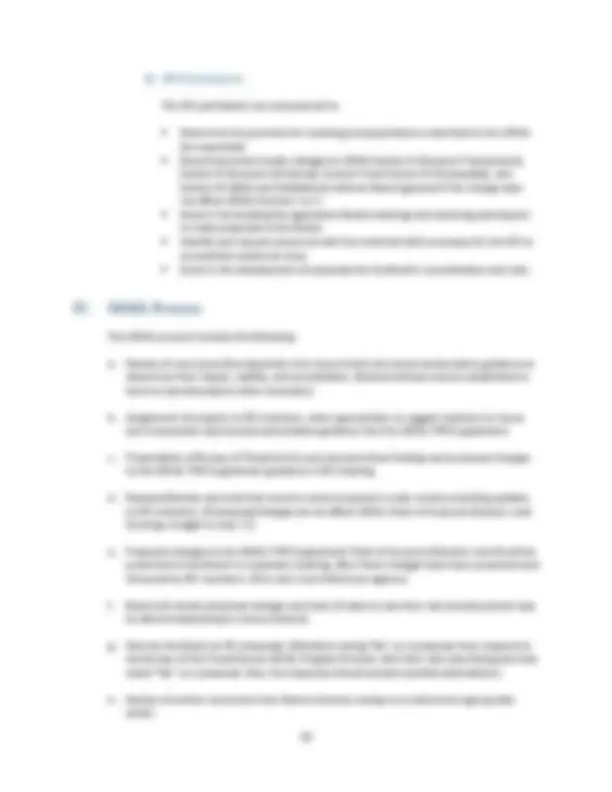


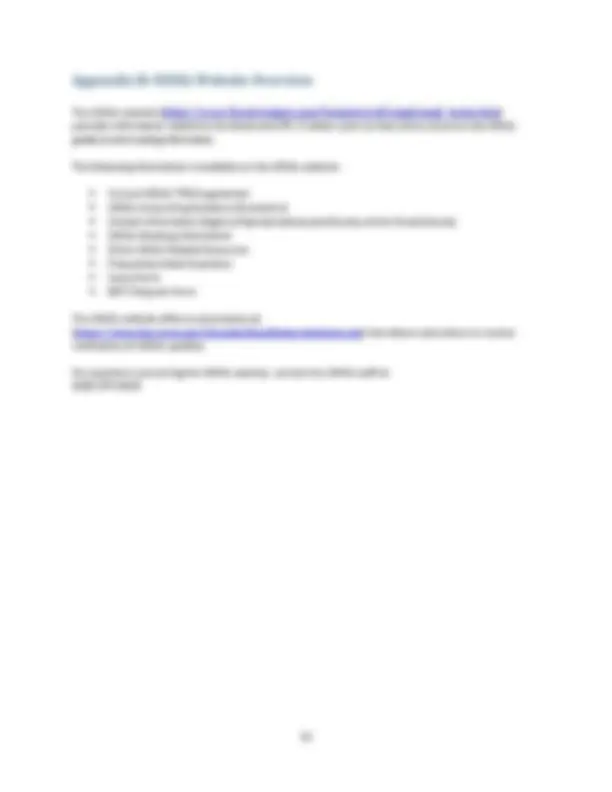


Study with the several resources on Docsity

Earn points by helping other students or get them with a premium plan


Prepare for your exams
Study with the several resources on Docsity

Earn points to download
Earn points by helping other students or get them with a premium plan
Community
Ask the community for help and clear up your study doubts
Discover the best universities in your country according to Docsity users
Free resources
Download our free guides on studying techniques, anxiety management strategies, and thesis advice from Docsity tutors
An overview of the USSGL Board, its purpose, bylaws, and organization. The USSGL was established in 1986 and is governed by the Board, which includes representatives from various agencies and departments. The Board's objectives include approving changes to the USSGL Chart of Accounts, assisting in the maintenance and development of standard accounting transactions, and identifying and resolving issues related to the USSGL. The document also outlines the roles and duties of the USSGL Program Director, OMB representatives, and other Board members.
Typology: Lecture notes
1 / 15

This page cannot be seen from the preview
Don't miss anything!










For questions regarding the USSGL Board, the Issues Resolution Committee (IRC), or the USSGL Bylaws, call the Director at (304) 480 ‐5129. Approved in 2017 by the USSGL Board
The USSGL Board, or the Board, under the auspices and direction of OMB and Bureau of the Fiscal Service, governs the operation and maintenance of the USSGL (TFM Volume I, USSGL Supplement). The Board’s objectives and mission include the following: Approving all changes to the USSGL TFM Supplement Chart of Accounts (Sections I and II); Assisting in the maintenance and development of standard accounting transactions in the Federal Government related to the USSGL; Identifying and resolving issues affecting specific Governmentwide standard reporting within the purview of the USSGL.
Bureau of the Fiscal Service created the Board and the IRC to carry out the functions of the USSGL. The IRC is a workgroup of the Board and is comprised of Board members or their designees
1. USSGL Board The Board (Appendix A) is a forum made up of representatives from various agencies/departments. Its members discuss Federal financial management issues and determine the actions necessary and pertinent to maintaining the USSGL TFM Supplement. a) Bureau of the Fiscal Service On September 30, 1987, Bureau of the Fiscal Service was given responsibility for the USSGL. Bureau of the Fiscal Service provided a USSGL Program Director and a permanent staff to support the Board in carrying out its duties and functions. The USSGL Program Director and the Bureau of the Fiscal Service support staff are permanent members of the Board and the IRC. Bureau of the Fiscal Service is responsible for recruiting and maintaining agency support for the Board and the IRC. In addition, Bureau of the Fiscal Service maintains the USSGL TFM Supplement, assists in the identification and resolution of issues, and requirements affecting the USSGL TFM Supplement. b) OMB OMB’s representatives attend Board and IRC meetings. When requested, an OMB official may give a presentation to the Board and/or IRC based on specific OMB policies and procedures. In addition, OMB assists the Board in the identification and resolution of issues affecting OMB policy guidance and reporting requirements related to the USSGL TFM Supplement. OMB works with Bureau of the Fiscal Service to provide support to the Board and the IRC.
The IRC is a workgroup comprised of Board members, designated agency representatives, and Bureau of the Fiscal Service staff members. Some of the IRC members are assigned by their agencies on a permanent basis; others participate only on occasion, based on their expertise. The agency representatives provide operational technical expertise to the IRC to facilitate the development of standard USSGL accounts and transactions. The IRC focuses on the identification, prioritization, and resolution of issues related to the USSGL. Meetings are held to identify and discuss various Federal financial management issues that currently affect the USSGL and those that will affect it in the future. The IRC prepares documentation to be presented to the Board. At the request of OMB or Bureau of the Fiscal Service, the IRC works on projects that impact the USSGL and may require the development of standard accounting transactions, new accounts, attributes, or crosswalks. The IRC’s efforts are coordinated with FASAB, GAO, and the CFO Council to ensure that there is adherence to the financial standards established by these bodies. The work of the Board will not contradict previously set Federal financial management standards.
1. Composition of the Board The CFOs of major agencies/departments (or the CFO designees) must select representatives and must define the length of a representative’s term. Each CFO may select no more than two Board members. The current composition of the Board is as follows: a) Voting members Representatives from all executive agencies required to implement the USSGL are the voting members on the Board. Agencies that are currently not represented on the Board must obtain approval from Bureau of the Fiscal Service before a Board representative may be accepted. Independent agencies are collectively represented by one Board member, who also is a voting member. This Board member forwards pertinent information to the other independent agencies. b) Nonvoting members OMB, GAO, FASAB, and Bureau of the Fiscal Service staff members are nonvoting members on the Board (the Department of the Treasury can be represented by a Bureau of the Fiscal Service employee). These members serve in an advisory capacity to the Board on specific issues or projects. 2. Members of the IRC a) Bureau of the Fiscal Service
Distributing USSGL information to designated target audiences within the financial community. Conducting seminars, workshops, etc., for the Board and the financial community. Formulating and documenting standard accounts and transactions. Developing conceptual frameworks.
2. OMB The OMB members provide information about OMB policy and guidance that may impact the USSGL to the Board. Also, the OMB members participate collaboratively on the Board. Other OMB members’ duties include: Circulating/distributing information to the appropriate OMB offices for comment and/or implementation. Ensuring that OMB reporting requirements and policy guidance are updated to implement USSGL resolutions that have OMB concurrence. Advising OMB management of USSGL changes, project status, and itineraries. 3. Other Board Members The other Board members’ duties include: Participating in Board and IRC meetings (as necessary). Serving as agency liaison on USSGL issues. Coordinating and circulating USSGL proposals through appropriate agency personnel for comment. Advising the agency/department‐level CFO or the CFO designee of project status. Serving as a member of IRC subcommittees (as necessary). Voting on recommendations to change the USSGL TFM Supplement Chart of Accounts (Sections I and II). Presenting USSGL issues to the Board or the IRC (as necessary) and contributing to their successful resolution. Consulting with agency operational experts on subjects under discussion and at times bringing them to the Board or IRC meetings. Reviewing documents, proposals, and exposure drafts affecting the USSGL and providing input. 4. IRC Members The IRC members’ duties include: Serving as a member of IRC subcommittees (as requested). Reviewing new issues to determine their validity and prioritization (as requested). Suggesting solutions, inviting subject matter experts, and assisting on projects to carry out the work of the IRC.
Testing proposed accounts and accounting transactions to ensure that they meet USSGL and Governmentwide accounting and reporting requirements. Presenting recommended project changes to the Board (as requested). Providing input to update central agency reporting requirements. Performing other duties, as assigned.
5. Attendance/Participation at Meetings a) Board Meetings 1) The Board meets as necessary. All Board members or their designee should attend/participate all meetings. 2) Others may attend/participate the Board meeting upon approval from Bureau of the Fiscal Service and/or their Board representative member. b) IRC Meetings 1) Meetings are held as needed with a minimum of four per year. Various agency representatives, depending on their expertise and their agency’s interest in the subject matter, attend/participate. 2) A Board member or a designee may attend/participate meetings. 6. Voting Rights USSGL Board The Board members are entitled to one vote per agency or department (Independent Agencies collectively have one vote). Voting results are based on a majority, with the USSGL Program Director having the deciding vote in case of a tie. The following Board agencies have voting membership: Department of Agriculture Department of Commerce Department of Defense Department of Education Department of Energy Department of Health and Human Services Department of Homeland Security Department of Housing and Urban Development Department of Interior Department of Justice Department of Labor Department of State Department of Transportation Department of the Treasury Department of Veterans Affairs
d) IRC Participants The IRC participants are empowered to: Determine the priorities for resolving issues/problems submitted to the USSGL (as requested). Recommend and review changes to USSGL Section III (Account Transactions), Section IV (Account Attributes), Section V and Section VI (Crosswalks), and Section VII (Edits and Validations) without Board approval if the change does not affect USSGL Sections I or II. Assist in formulating the agenda for Board meetings and selecting participants to make proposals to the Board. Identify and request personnel with the technical skills necessary for the IRC to successfully resolve an issue. Assist in the development of proposals for the Board’s consideration and vote.
The USSGL process includes the following: a. Review of new issues (See Appendix A for Issues form) and issued authoritative guidance to determine their impact, validity, and prioritization. (Subcommittees may be established to work on special projects when necessary.) b. Assignment of projects to IRC members, when appropriate, to suggest solutions to issues and incorporate new/revised authoritative guidance into the USSGL TFM Supplement. c. Presentation of Bureau of Fiscal Service and subcommittee findings and proposed changes to the USSGL TFM Supplement guidance in IRC meeting. d. Respond/Review any technical concerns when proposal is under review providing updates to IRC members. (If proposal/changes do not affect USSGL Chart of Accounts (Section I and II) will go straight to step “j”). e. Proposed changes to the USSGL TFM Supplement Chart of Accounts (Section I and II) will be presented to the Board in a separate meeting, after these changes have been presented and discussed by IRC members. (One vote is permitted per agency.) f. Board will review proposed changes and have 14 days to cast their vote (review period may be altered depending on various factors). g. Vote by the Board on IRC proposals. (Members voting “No” on a proposal must respond to the Bureau of the Fiscal Service USSGL Program Director with their vote describing why they voted “No” on a proposal. Also, the responses should present possible alternatives.) h. Review of written comments from Board members voting no to determine appropriate action.
i. Notify Board Members of any changes/modifications as a result of the vote. j. Bureau of Fiscal Service staff will ensure USSGL TFM Supplement is updated and distributed to the appropriate audience.
The USSGL, TFM Volume I, Supplement, provides a uniform Chart of Accounts to standardize Federal agency accounting that supports the preparation of standard external reports required by central agencies. OMB and Bureau of the Fiscal Service regulations require agencies to use the USSGL to accumulate and report standard financial data (to access this data, see Appendix C). The USSGL Chart of Accounts identifies and defines budgetary, proprietary, and memorandum accounts to be used in agencies’ accounting systems. The USSGL is generic for the Federal Government and is not intended to reflect any single Federal agency’s accounting system. The USSGL TFM Supplement is composed of seven sections: Section I: Chart of Accounts Section II: Accounts and Definitions Section III: Account Transactions Section IV: USSGL Account Attributes Section V: USSGL Crosswalks to Standard External Reports Section VI: USSGL Crosswalks – Reclassified Statements Section VII: GTAS Edits and Validations Section I. Chart of Accounts The Chart of Accounts provides the basic structure of the USSGL. It incorporates proprietary, budgetary, and memorandum accounts. The proprietary and budgetary accounts are both self‐ balancing sets of accounts. The budgetary accounts, set forth in the 400000 series, are used to record budgetary resources and final status required for fund control and to generate budgetary reports required by the central agencies. The proprietary accounts include the 100000 through 700000 series with the exception of the 400000 series and are used to record assets, liabilities, and Government equity in agencies’ accounting systems. In addition, they are used to generate proprietary financial statements required by the central agencies. All agencies must use the account numbering framework set forth in the Chart of Accounts. The 800000 series provides for standard Governmentwide memorandum accounts. Section II. Accounts and Definitions This section includes the account descriptions and basic information about each account, including the account title and the account’s normal balance (debit or credit). Section III. Account Transactions
Date: ____________ Submitted By: _______________________________________________ Agency Point of Contact: _______________________________________________________________ Name E‐mail Address Phone Scope of Issue: ____ Governmentwide ____ Agency Specific ____ Other Complete the following lines and attach supporting documentation of issue. Affected USSGL Account(s):
Description of problem:
Relevant References: (cite specific page or section numbers)
Proposed Solution:
Agency Representative: _________________________________________________________ Name E‐mail Address Phone